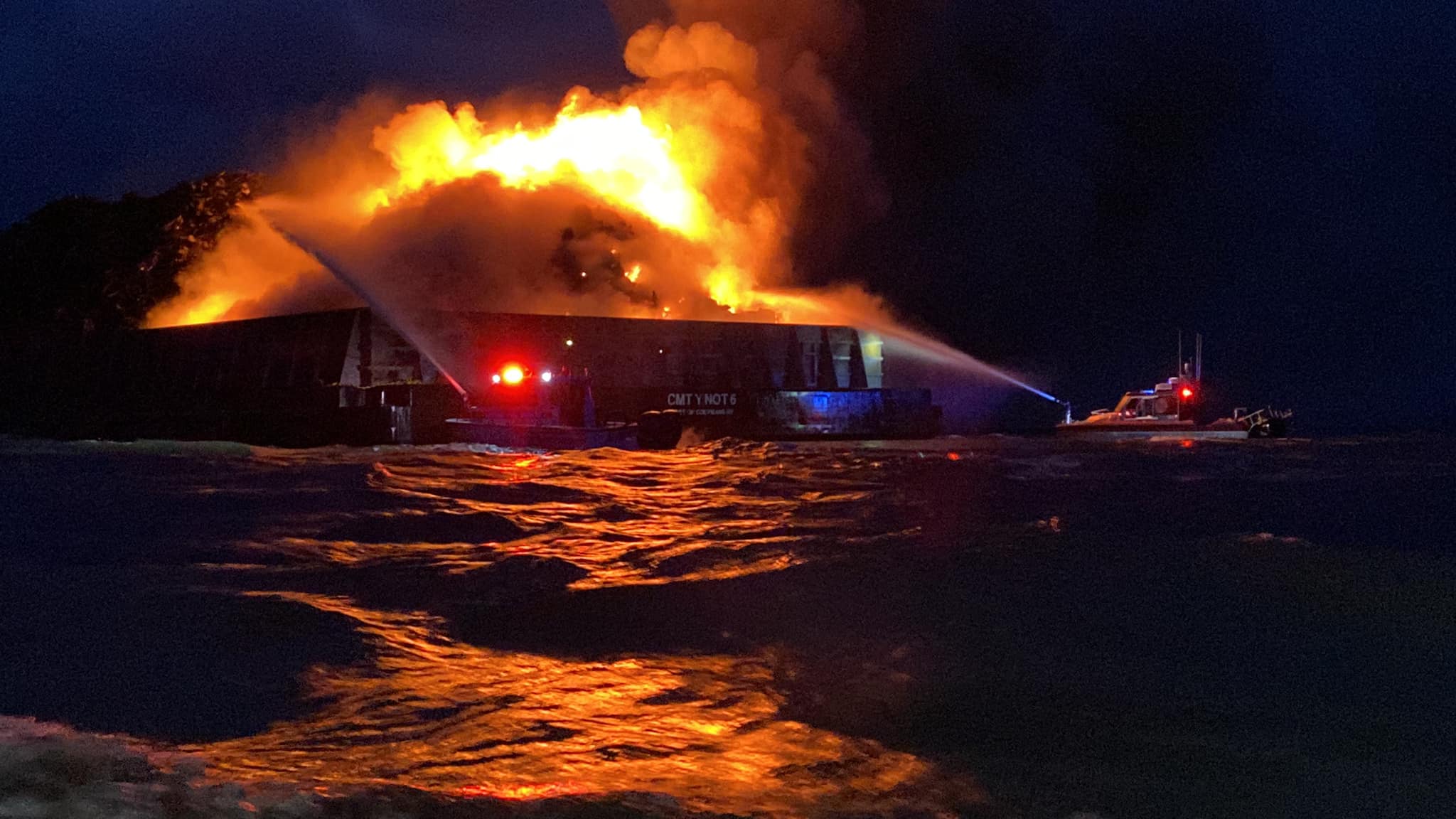By Timothy B. Wheeler, Bay Journal News Service
The U.S. Navy has reported finding high concentrations of toxic “forever chemicals” in groundwater beneath its Patuxent River air base in Southern Maryland and beneath a smaller airfield nearby on the St. Marys River.
Per- and polyfluoroalkyl substances, or PFAS, were detected in all 16 areas sampled last year at Naval Air Station Patuxent River and at both areas checked at the Webster Field annex, the Navy disclosed in a 50-page document recently posted online. The shallow groundwater contaminated by PFAS seeps into “nearby streams and rivers,” the Navy document says. The Patuxent River is a tributary of the Chesapeake Bay, while the St. Marys River flows into the Potomac River, another Bay tributary.
The sprawling Patuxent River facility includes headquarters for the Naval Air Systems Command and a test range for aircraft and pilots. Webster Field is a 1,000-acre naval air research facility a dozen miles to the south with its own smaller airfield.
Public concern about PFAS contamination around the facilities has been heightened since early 2020. That’s when Pat Elder, an environmental activist in St. Mary’s County, reported that a private lab test of water from the tidal creek separating his home from Webster Field found an elevated concentration of PFAS.
PFAS are a group of thousands of chemicals that since the 1940s have been used in a host of consumer and industrial products, including nonstick cookware, waterproof clothing, stain-resistant fabrics and carpets, some cosmetics and some firefighting foams. PFAS have been found in groundwater, streams and drinking water supplies in nearly 1,600 places nationwide, according to the Environmental Working Group. There are several dozen sites in the six-state Bay watershed.
The 16 areas checked at the Patuxent River base were all used to train firefighters or demonstrate fire suppression techniques, or they were crash sites, the Navy report said.
Health effects of ingesting many PFAS compounds haven’t been thoroughly researched. But the most frequently studied ones, including those used in firefighting foams, have been found to interfere with the body’s hormones, increase cholesterol levels, affect the immune system, and raise the risk for some cancers.
The U.S. Environmental Protection Agency has indicated it is moving to regulate a number of PFAS compounds. To date, however, it has only set a lifetime exposure guideline of 70 parts per trillion for drinking water containing two of the more studied PFAS chemicals, perfluorooctanoic acid (PFOA) and perfluorooctane sulfonate (PFOS).
PFAS levels in at least some spots at all 16 Patuxent River areas sampled exceed the EPA drinking water threshold. The highest concentration—a combined total of more than 37,000 parts per trillion for the three compounds the Navy checked for—was found at a site where personnel inspected and tested “crash trucks” used to suppress runway fires.
At Webster Field’s Fire Station 3, a few hundred feet from the banks of the St. Marys River, testing showed a level more than twice as high — a combined total of 87,000 parts per trillion for the three PFAS compounds — the Navy reported. Firefighting foam has been stored there, the report said.
The report said there were “no known concerns” that PFAS had seeped off base to contaminate nearby drinking water wells, and tests of base drinking water wells did not detect the chemicals, either.
But Elder called the Webster Field detection “truly frightening, noting that the level of PFOS in groundwater tested at the fire station there was 1,200 times the federal guideline.” He said that the Navy’s findings reinforce his worries that PFAS from the facilities may be contaminating fish and shellfish in waters used by recreational anglers, oyster farmers and commercial watermen.
The Maryland Department of the Environment has been working to identify sites where PFAS may have been used or disposed of, to pinpoint any continuing releases of the chemicals into groundwater and to weigh the risks they may pose to human health. As part of that effort, the MDE did a pilot study last year testing water and oysters around the two naval airfields. It reported finding no PFAS in the shellfish and only “very low” levels in the water.
Environmentalists questioned the MDE’s interpretation, though, and later reported private lab results detecting high PFAS levels in an oyster, a crab and a fish sampled from Southern Maryland waters. A rockfish caught near the mouth of the Potomac River less than 10 miles downriver from Webster Field had a total of 23,000 parts per trillion, representing nine different PFAS compounds, according to the nonprofit group Public Employees for Environmental Responsibility.
David Steckler, remedial project manager for naval facilities in the Washington, D.C. region, said that as part of the Navy’s investigation, much more sampling is likely. That sampling will help determine whether the contamination poses any human health or ecological risks, he said.
MDE spokesman Jay Apperson said state regulators are reviewing the information from the Navy and consulting with EPA officials involved in monitoring investigations of contamination at the military installations.
The Navy plans to present its findings on April 28 during a virtual public meeting of its restoration advisory board, a group of local community leaders and others briefed periodically on environmental issues at the installation.




